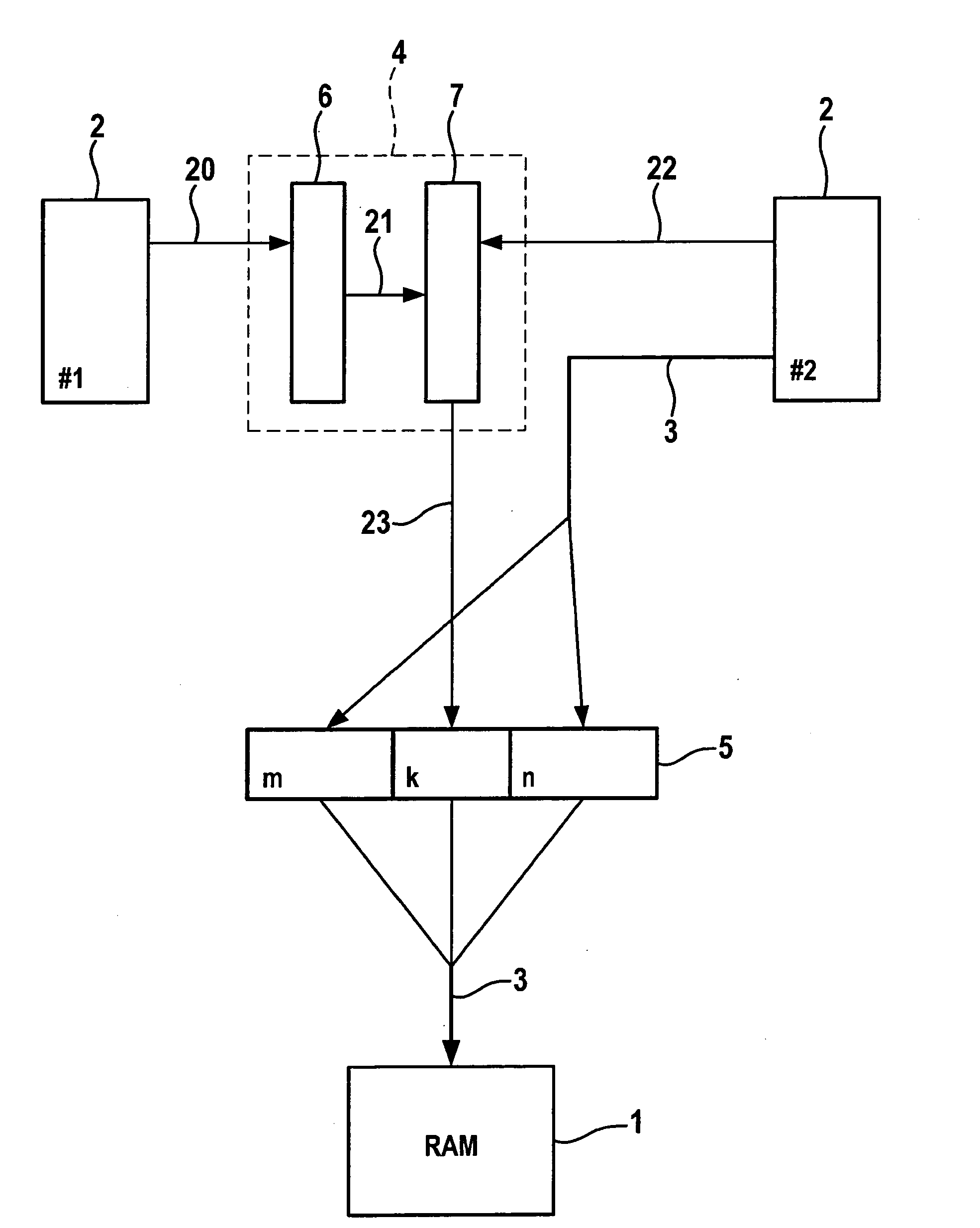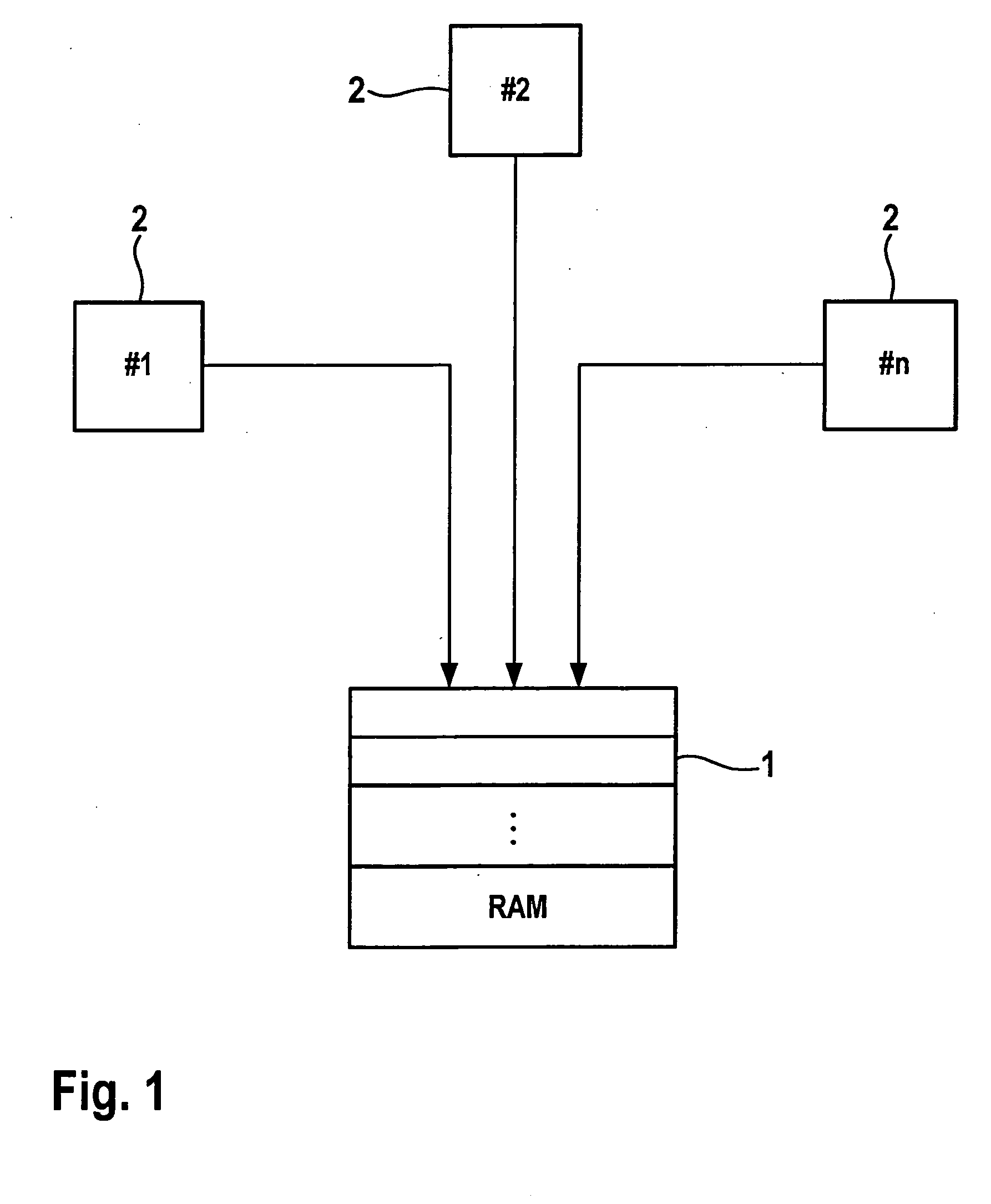Method for controlling access to regions of a memory from a plurality of processes and a communication module having a message memory for implementing the method
- Summary
- Abstract
- Description
- Claims
- Application Information
AI Technical Summary
Benefits of technology
Problems solved by technology
Method used
Image
Examples
Embodiment Construction
[0021]FIG. 1 shows a memory 1 designed as a random access memory (RAM), for example. The memory may be designed in particular as a dual-ported RAM or as a single-ported RAM. Memory 1 may of course also be designed as any other volatile or nonvolatile writable memory. Multiple processes (#1, #2, #n) 2 may access regions of memory 1. Access to the memory regions includes in particular a write and / or a read access to memory 1. Processes 2 include, for example, a central processing unit (CPU) and any peripheral devices, which are able to access regions of same memory 1.
[0022]Memory 1 may also be part of a communication controller (CC) 31 of a communication node 32 of a communication system 33, e.g., a FlexRay network, a CAN network or a TTCAN network, as shown in FIG. 4 as an example. Memory 1 may be accessed via a communication medium 30 (e.g., FlexRay bus, CAN bus, TTCAN bus) on the one hand and on the other hand by a host processor 34 (host CPU) of communication node 32, to which com...
PUM
 Login to View More
Login to View More Abstract
Description
Claims
Application Information
 Login to View More
Login to View More - R&D
- Intellectual Property
- Life Sciences
- Materials
- Tech Scout
- Unparalleled Data Quality
- Higher Quality Content
- 60% Fewer Hallucinations
Browse by: Latest US Patents, China's latest patents, Technical Efficacy Thesaurus, Application Domain, Technology Topic, Popular Technical Reports.
© 2025 PatSnap. All rights reserved.Legal|Privacy policy|Modern Slavery Act Transparency Statement|Sitemap|About US| Contact US: help@patsnap.com



